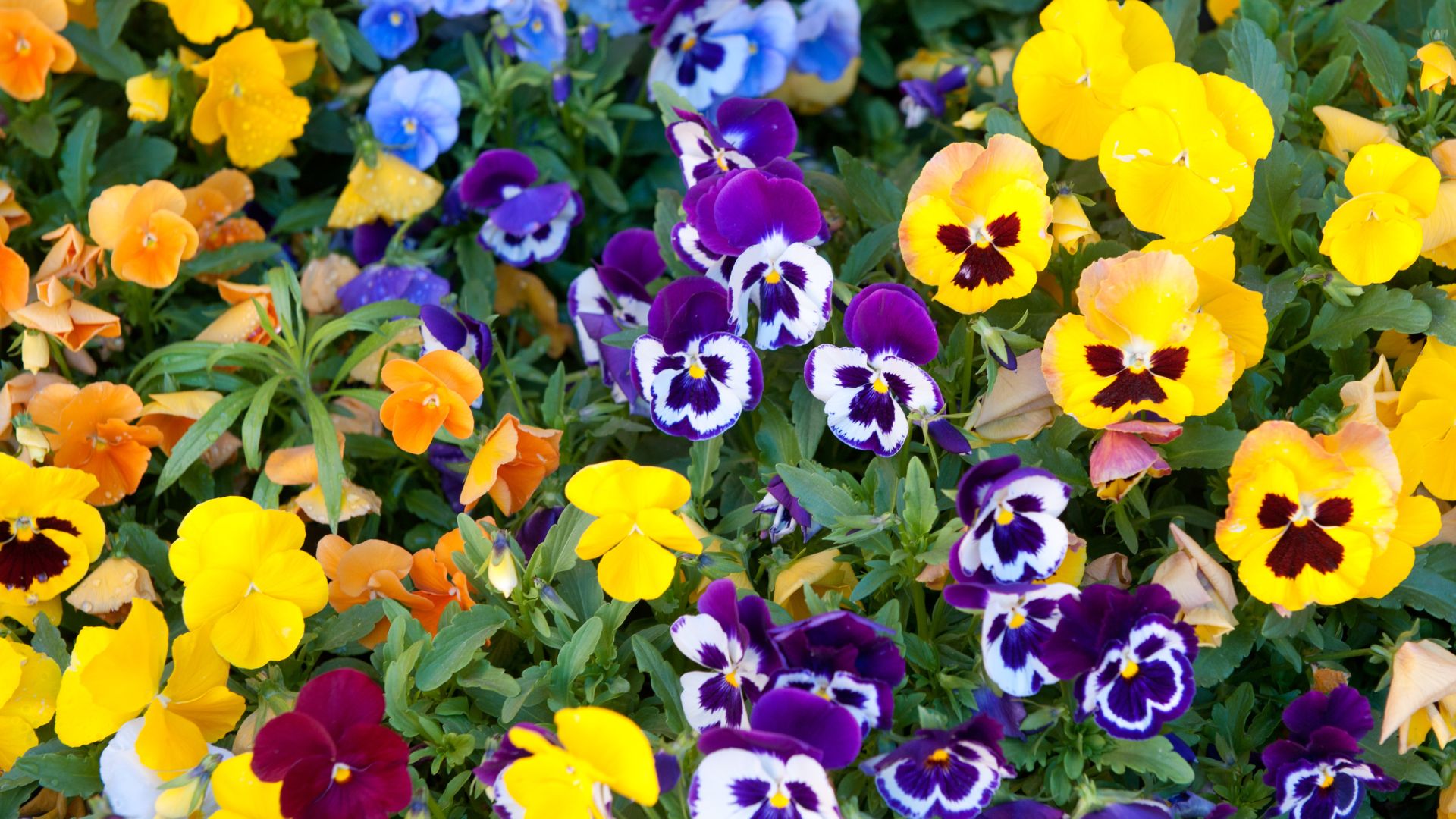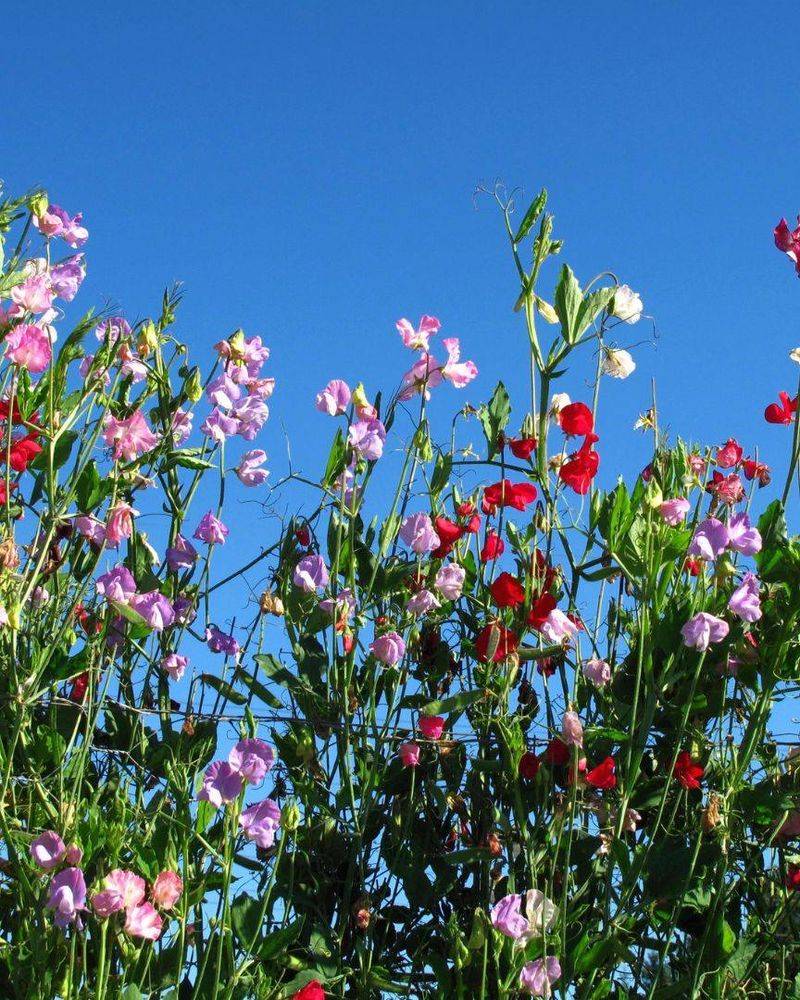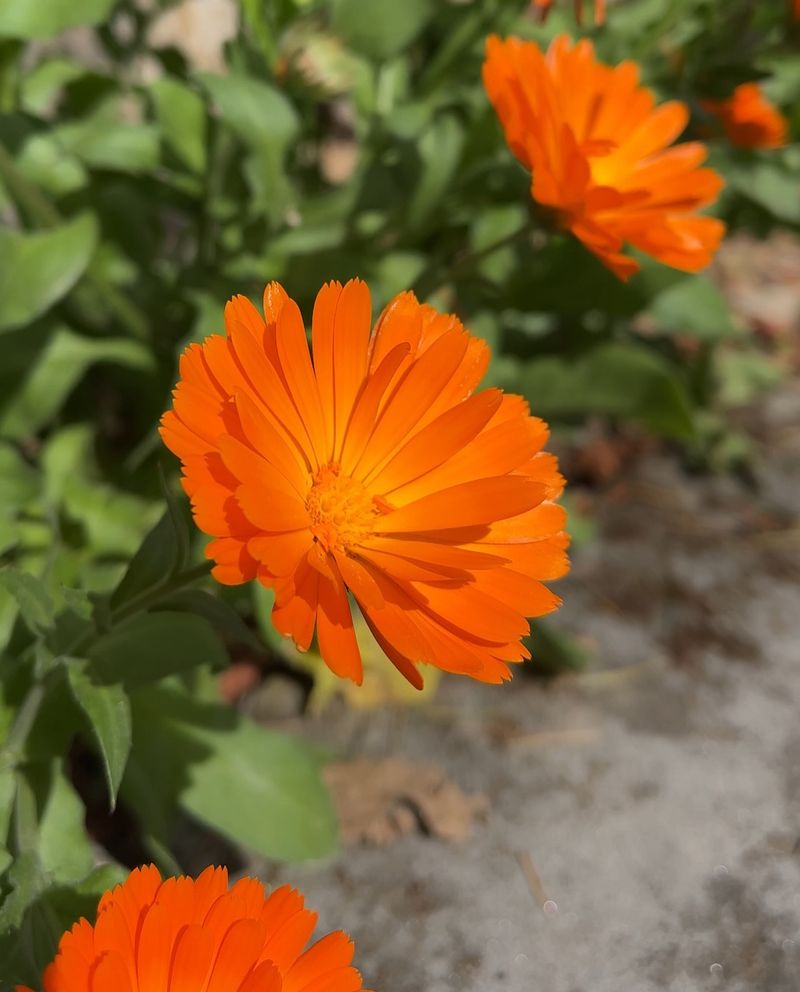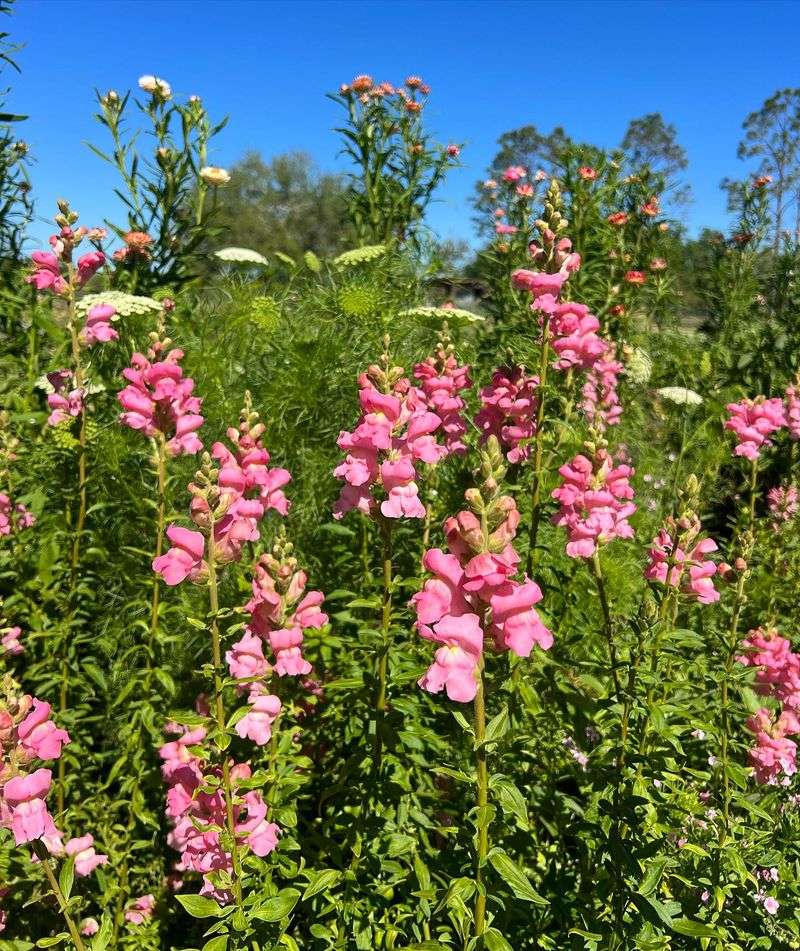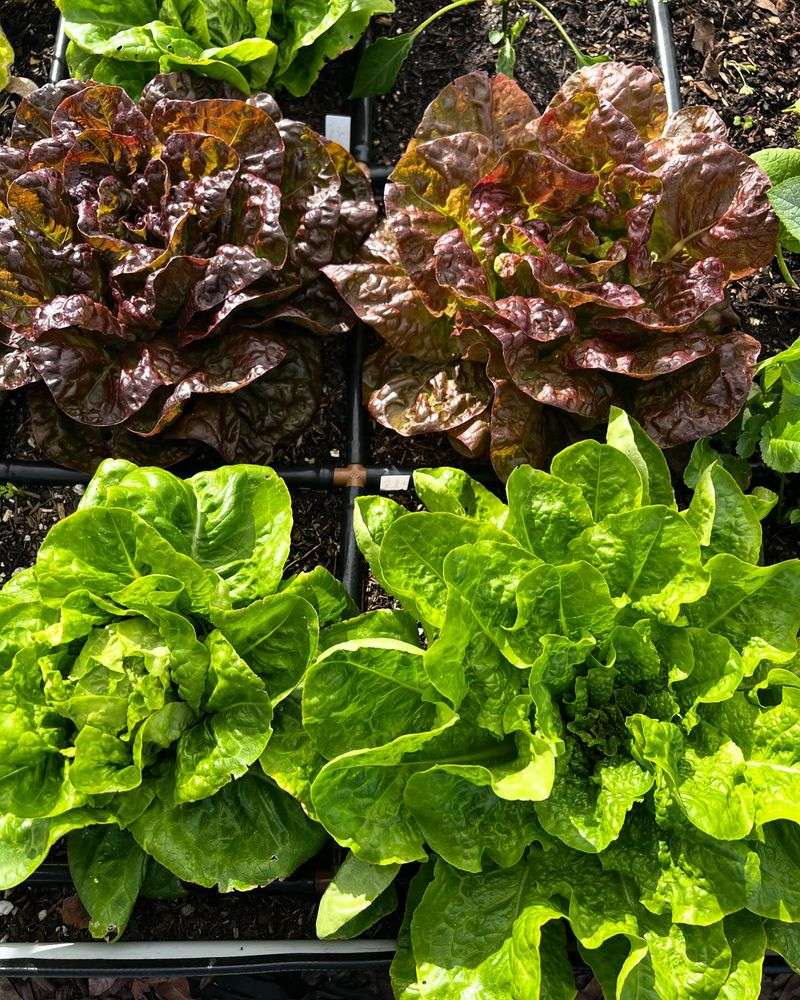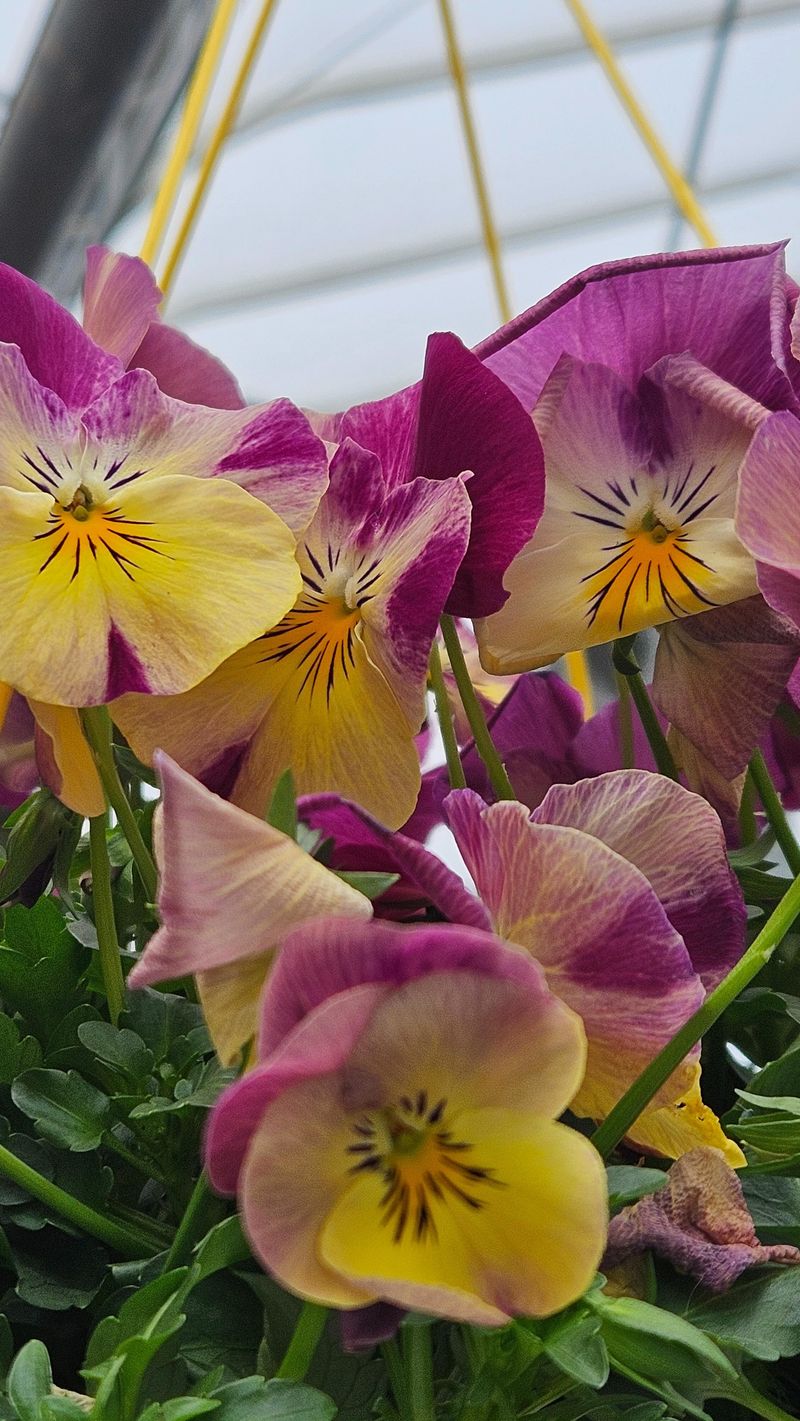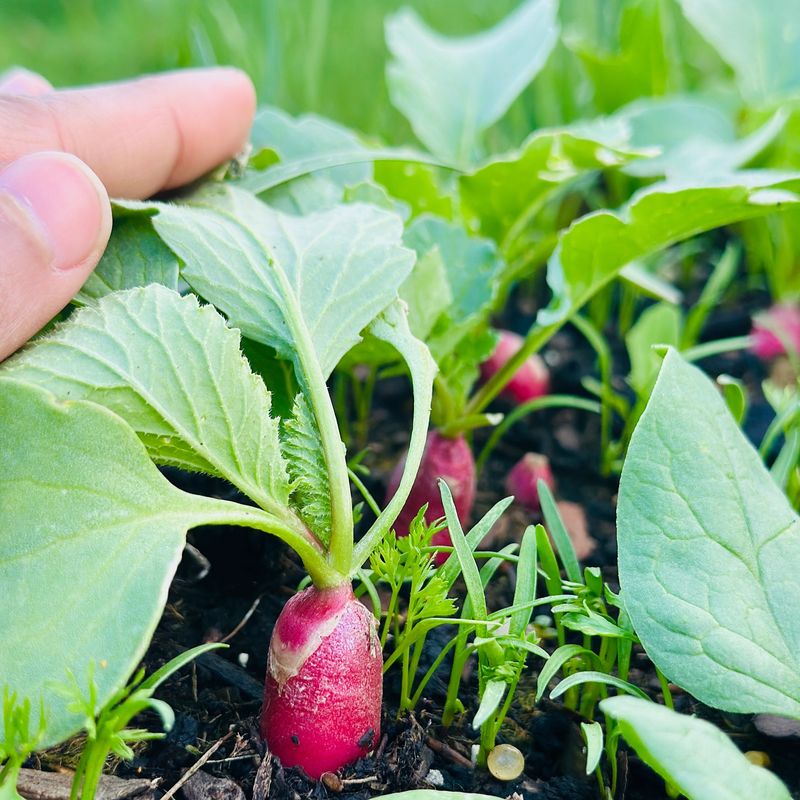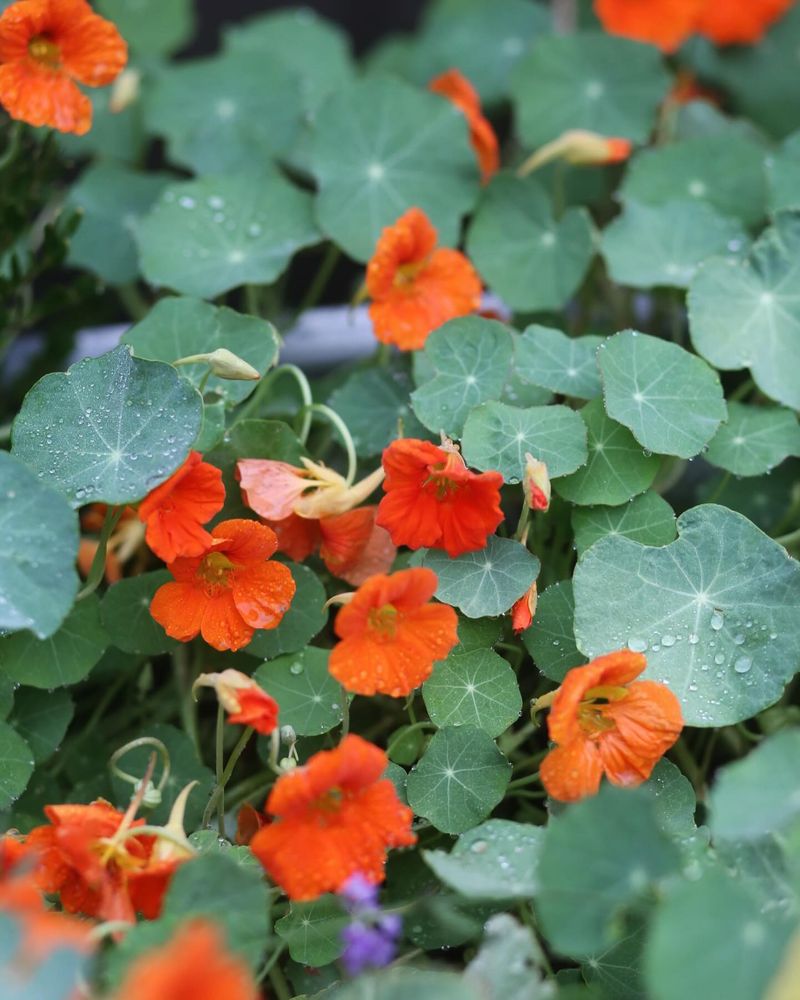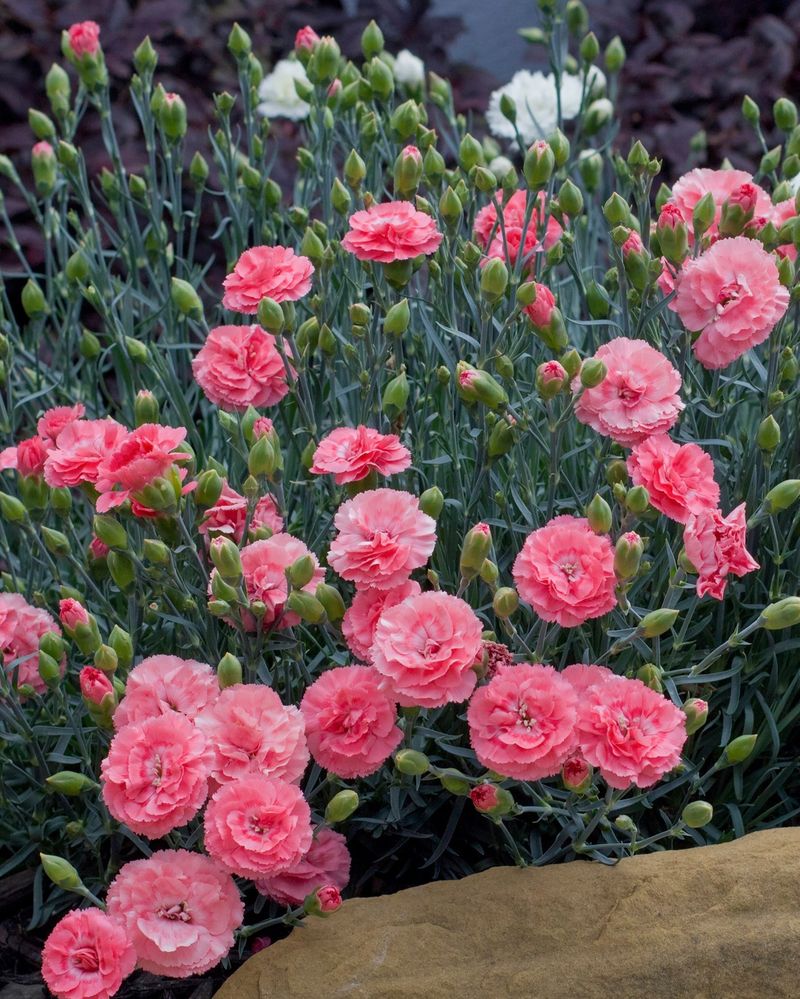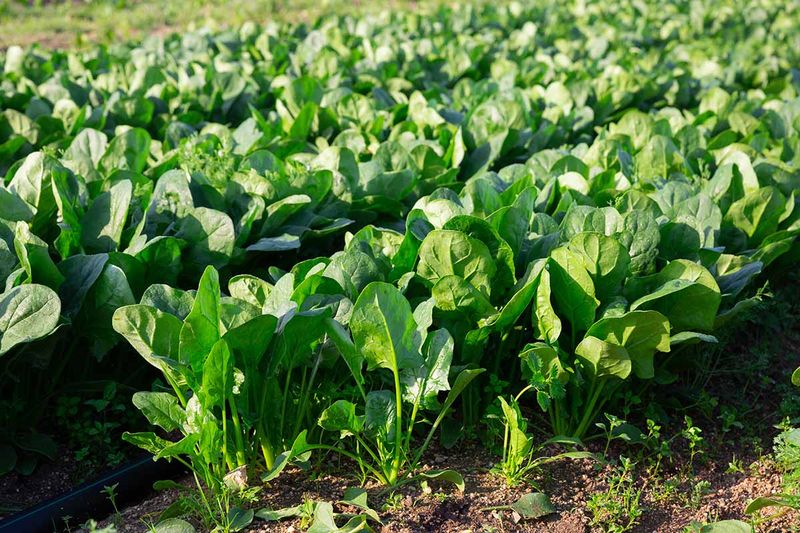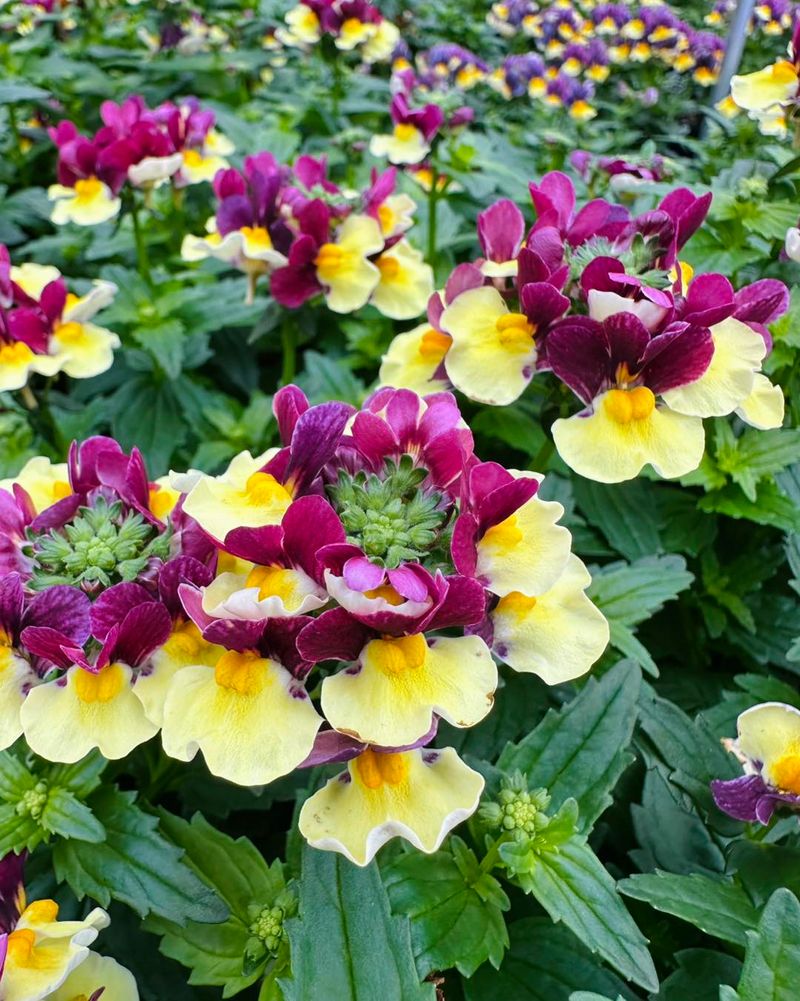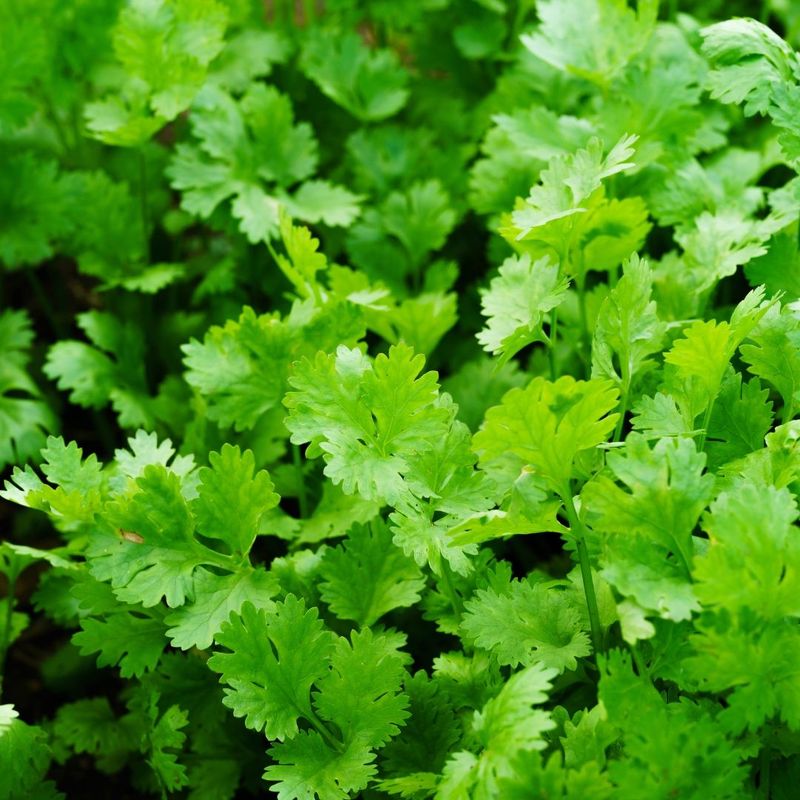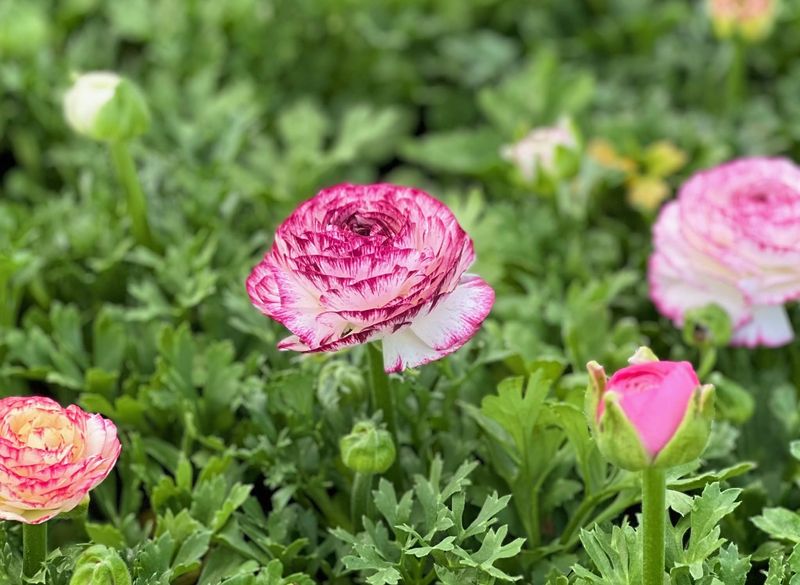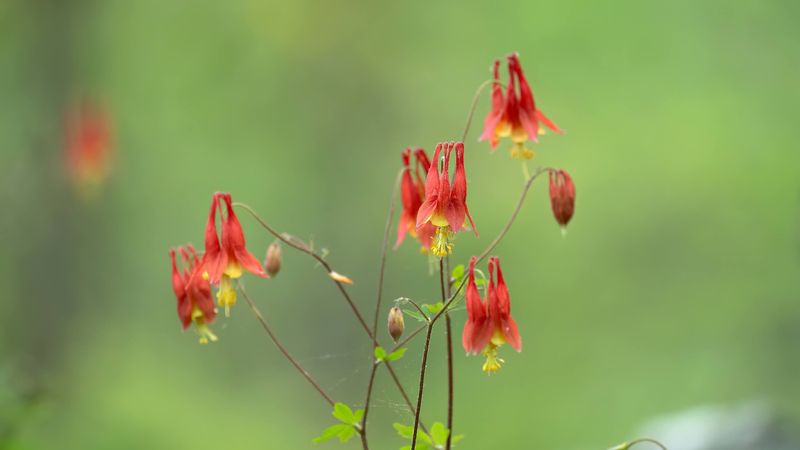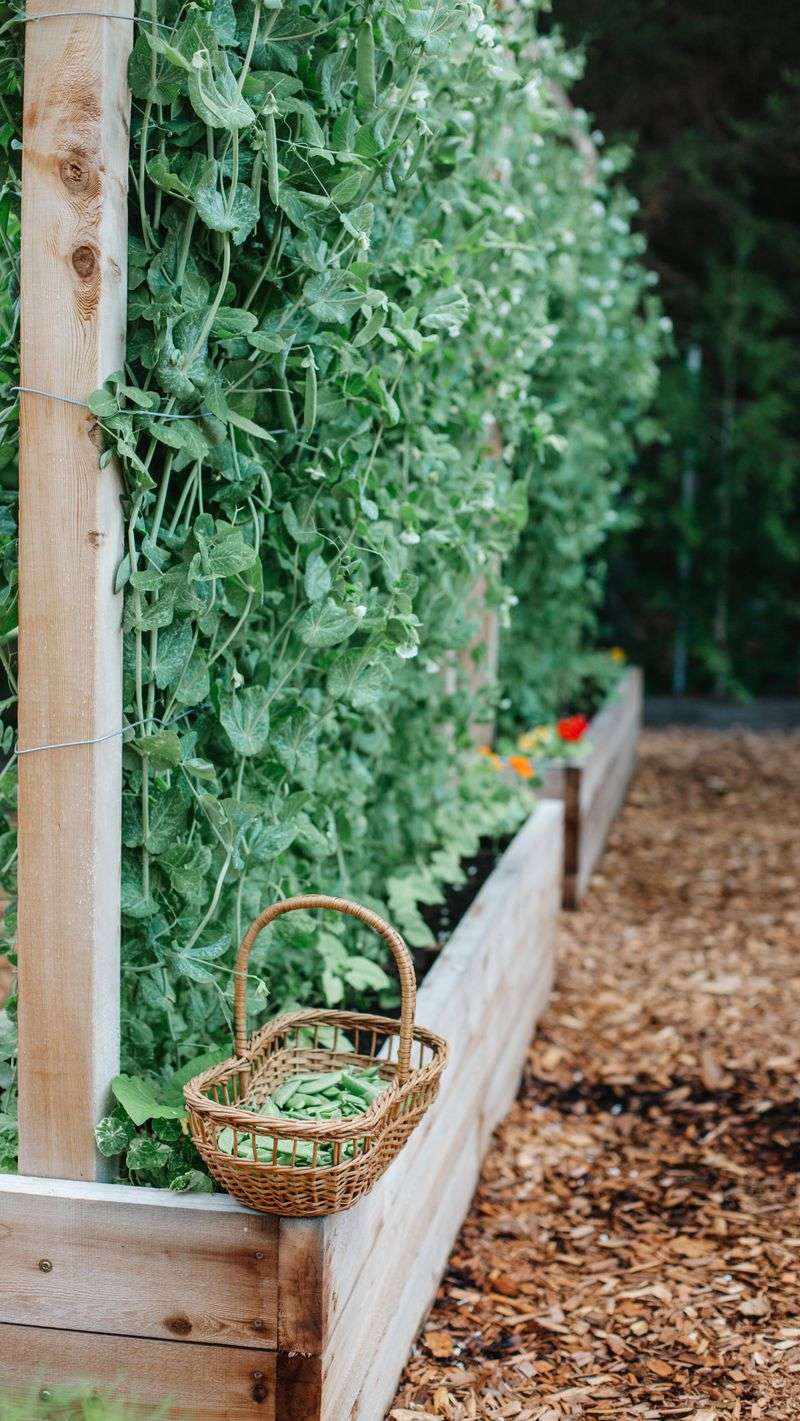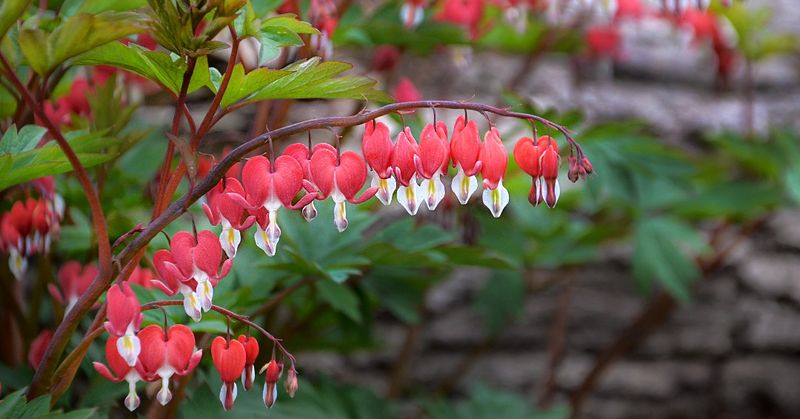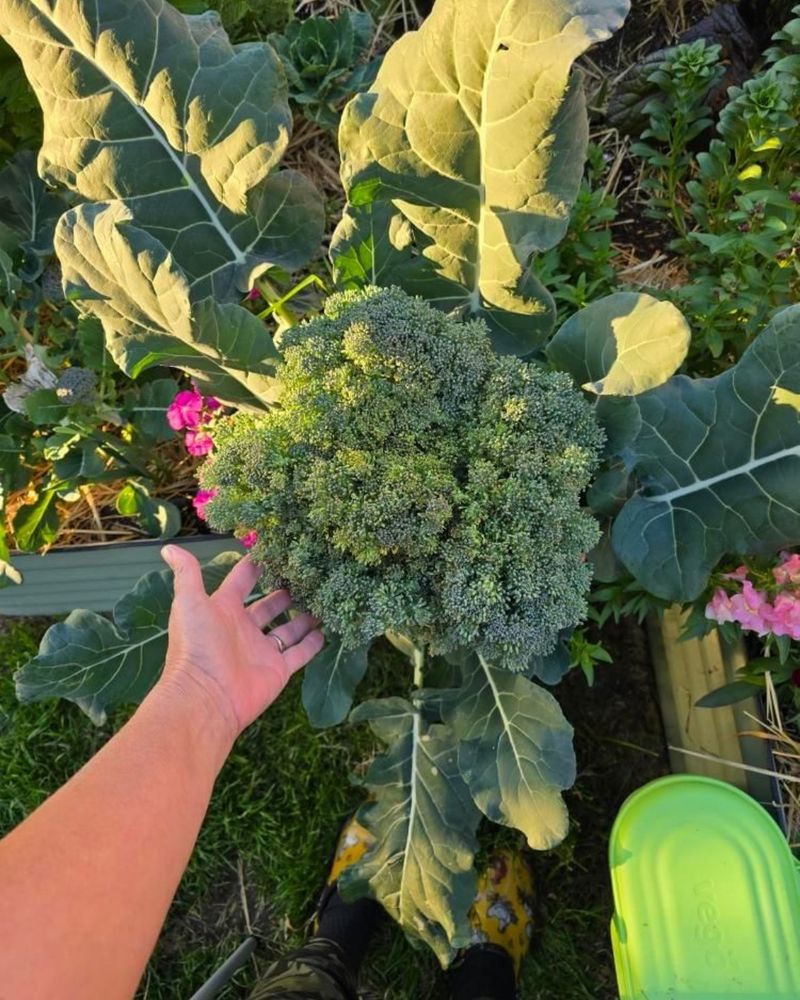May brings a magical mix of cool mornings and sun-soaked afternoons that creates ideal conditions for many garden favorites. This temperature swing might seem challenging, but it actually mimics the natural conditions that many plants evolved to thrive in.
Finding the right plants for this transitional time can transform your garden from spring sleeper to early summer showstopper. The right choices will establish strong roots while temperatures are mild and then burst with growth as the days lengthen.
In my own garden, I’ve found that plants that enjoy this mix of sun and chill tend to be the most reliable performers through early summer. After years of trial and error, these 18 plants have proven themselves to be May’s most enthusiastic growers in my beds and borders.
1. Sweet Peas
Sweet peas hit their stride when mornings stay cool but afternoons warm up. Their fragrant blossoms open wider during these temperature shifts, releasing more of their signature perfume throughout the garden.
The vines climb vigorously during May, using morning moisture to fuel afternoon growth spurts. I’ve noticed they produce their most abundant blooms when they experience this daily temperature contrast.
Plant them along east-facing fences where they’ll catch morning sun but avoid afternoon heat stress. They’ll reward you with armfuls of cut flowers that last surprisingly well indoors where temperatures remain more constant.
2. Calendula
Commonly called pot marigold, calendula doesn’t just tolerate May’s temperature swings—it celebrates them with non-stop blooming. The bright orange and yellow flowers close partially at night, protecting their pollen from dew.
Last year, I planted a patch near my kitchen window, and they opened wider each day as temperatures rose. Their edible petals added color to spring salads and became my secret ingredient in homemade skin balms.
These cheerful flowers self-seed readily but never become invasive. They’re also among the few annuals that deer consistently avoid, making them perfect for unprotected garden edges where morning browsing is common.
3. Snapdragons
Nothing says May quite like snapdragons standing tall in the border. These architectural beauties prefer taking their first drink of the day when it’s cool, then stretching upward as temperatures rise.
My grandmother always claimed snapdragons were weather predictors—watching how their blooms react to humidity changes throughout the day. When afternoons warm gradually, they produce their strongest stems and most vibrant colors.
Plant them in groups of five or seven for the best visual impact. The shorter varieties rarely need staking, but taller types appreciate a discreet bamboo support hidden among their stems before they reach their full May glory.
4. Lettuce
May’s temperature pattern creates the sweet spot for perfect lettuce. Cool nights prevent bitterness while warm afternoons provide just enough heat for steady growth without bolting.
I’ve experimented with dozens of varieties, finding that loose-leaf types like ‘Red Sails’ and ‘Oak Leaf’ particularly thrive with this temperature rhythm. Their roots appreciate the cool mornings to establish themselves before the day heats up.
Sow seeds every ten days throughout May for continuous harvests into early summer. A light row cover can extend this perfect growing window even further, creating artificial cool mornings if temperatures start climbing too quickly toward the month’s end.
5. Pansies
Often overlooked as merely early spring flowers, pansies actually peak during May’s balanced temperatures. Their velvety faces turn toward the morning sun after closing slightly overnight in response to cooler temperatures.
Unlike March pansies that sometimes look weather-beaten, May pansies reach their full potential with larger blooms and stronger stems. The cooler mornings help their colors remain vivid instead of fading in constant heat.
My favorite trick is planting them in morning-sun locations where taller summer plants will eventually provide afternoon shade. This extends their season well into June, especially if you deadhead spent blooms weekly during your morning garden rounds.
6. Radishes
Twenty-one days from seed to harvest makes radishes the instant gratification crop of May gardens. The cool nights prevent them from becoming woody while warm afternoons speed root development without making them pithy.
I’ve found French Breakfast radishes particularly responsive to May’s temperature patterns. Their elongated shape seems to develop more evenly than round varieties when growing through these daily temperature shifts.
Sow seeds directly where they’ll grow, as they resent transplanting. Keep soil consistently moist during morning watering, then let afternoon warmth do the growth work. Harvest in the early morning when their crisp texture and peppery flavor reach perfect balance.
7. Nasturtiums
Nasturtiums embody May’s spirit—bright, cheerful, and incredibly adaptable to changing conditions. Their round leaves collect morning dew in perfect little droplets that help sustain them through warming afternoons.
The cooler mornings keep their colors intense—whether you’ve chosen traditional oranges and reds or the newer ruby and cream varieties. I started growing them between stepping stones where they get morning shade but afternoon warmth reflects off the stone.
Both flowers and leaves are edible with a peppery kick that’s milder in May than later summer harvests. Plant them near vegetables that need pollination; they’ll attract beneficial insects while their sprawling habit suppresses weeds during this active growing period.
8. Dianthus
Dianthus—sometimes called pinks—perform their best balancing act during May. The spicy clove scent intensifies in cool morning air, then the heat of afternoon sun opens the blooms fully, releasing their fragrance across the garden.
The blue-green foliage forms tight mounds that rarely flop or split, even as flowering reaches its peak. After trying countless perennials, I’ve found few that handle May’s temperature variations with such grace and reliability.
Position them at the front of borders where morning dew highlights their perfectly formed blooms. Modern varieties rebloom throughout summer if deadheaded, but nothing matches their first magnificent May flush when the plants are fresh and vigorous.
9. Spinach
May represents spinach’s final glory days before summer heat triggers bolting. The cool mornings slow down this process while warm afternoons provide enough energy for leaves to size up quickly.
Savoy varieties with crinkled leaves seem particularly well-suited to May’s conditions in my garden. Their texture holds morning moisture without becoming disease-prone, and the leaves remain sweeter than flat-leaf types as temperatures fluctuate.
Harvest in early morning when leaves are at their crispest and most nutritious. A light row cover can extend your harvest window by creating artificially cool mornings even as May progresses toward June. Succession plant every week for continuous harvests before summer’s heat ends spinach season.
10. Nemesia
This one brings cottage garden charm with modern reliability during May’s changeable weather. The small snapdragon-like flowers pump out blooms at an astonishing rate when nights stay cool but days provide ample sunshine.
Unlike some more delicate annuals, nemesia bounces back quickly if caught by a late frost. The compact plants form tidy mounds that work beautifully in containers where they can be moved to catch morning sun but avoid afternoon heat stress.
My containers near the patio doors get morning sun reflection from windows, creating a microclimate nemesia particularly loves. The plants stay stockier with more flowers when they experience this daily cool-to-warm transition rather than constant temperatures.
11. Cilantro
May creates the sweet spot for cilantro—that notoriously quick-to-bolt herb many gardeners struggle with. Cool mornings slow its flowering instinct while warm afternoons provide just enough energy for lush leaf production.
I’ve learned to place cilantro where it receives morning sun but gets dappled shade by mid-afternoon. This location mimics its native growing conditions and extends harvests by weeks compared to full-sun plantings.
Sow seeds directly every two weeks throughout May for continuous harvest. Morning watering helps seeds germinate evenly in warming soil. Harvest outer leaves after morning dew has dried but before afternoon heat intensifies the volatile oils that give cilantro its distinctive scent.
12. Ranunculus
Ranunculus corms planted in early spring hit their spectacular stride during May. The rose-like blooms unfurl slowly in cool morning air, then stand tall as afternoon warmth strengthens their stems.
Unlike true roses that peak later, ranunculus thrives in this spring transition period. The cool nights help the cut flowers last nearly two weeks in a vase—something I discovered by accident when I brought in a bouquet before an unexpected frost warning.
Plant corms in fall or early spring in well-drained soil where they’ll receive morning sunshine. Their intricate, tissue-paper-like petals last longest when they can dry off quickly after morning dew or rain before afternoon heat arrives.
13. Potatoes
May’s soil conditions hit the sweet spot for potato growing. Morning coolness prevents tubers from developing too quickly, which can lead to hollow centers, while afternoon warmth encourages strong top growth.
Early varieties like ‘Yukon Gold’ respond particularly well to this temperature pattern. The plants use cool mornings to develop strong root systems before shifting energy to leaf production as the day warms.
I’ve had my best harvests when I’ve planted seed potatoes in mid-April, allowing them to emerge just as May’s balanced temperatures arrive. Hill the plants during morning garden sessions when soil is easier to work, adding a light layer of straw mulch that warms in the afternoon sun.
14. Columbine
Columbine flowers dance on delicate stems during May’s gentle breezes, their intricate spurred blooms catching morning dewdrops like tiny jewels. Native varieties seem particularly attuned to this season’s temperature rhythms.
The plants use cool mornings to conserve energy, then open fully as temperatures rise. My woodland garden edge features several varieties that have naturalized over the years, creating a tapestry that peaks precisely when May’s conditions are perfect.
Allow spent flowers to form seed heads rather than deadheading immediately. Morning birds, particularly finches, feast on the seeds while the plants take advantage of May’s balanced temperatures to produce next year’s seedlings without taxing the mother plants.
15. Sugar Snap Peas
Sugar snap peas capture May’s essence in edible form—sweet, crisp, and at their best when temperatures fluctuate. The vines climb eagerly during this period, converting cool mornings and warm afternoons into remarkably sweet pods.
My trellis near the kitchen door provides the perfect spot to grab a handful while heading out for morning garden chores. The flavor is noticeably sweeter than store-bought versions, especially when harvested before afternoon heat intensifies.
Plant seeds directly in late March or early April for May harvests. The plants appreciate deep morning watering followed by dry afternoon foliage. This moisture pattern, which naturally occurs in May, prevents the powdery mildew that often troubles peas planted later in the season.
16. Bleeding Heart
Bleeding heart puts on its most dramatic display during May when temperatures create perfect growing conditions. The arching stems of heart-shaped blooms emerge stronger and last longer when they can establish during cool mornings before afternoon warmth encourages rapid flowering.
Unlike summer-blooming perennials, bleeding heart has evolved to complete its flowering cycle before tree canopies fully leaf out. This adaptation makes it perfectly suited to May’s light patterns in woodland gardens.
Position plants where they’ll receive morning sun but afternoon shade as May progresses. This mimics their natural forest-edge habitat and prevents early dormancy. After flowering, companion plants like hostas will expand to fill the space as bleeding heart gracefully retreats for the season.
17. Broccoli
May’s temperature pattern creates the ideal growing environment for perfect broccoli heads. Cool mornings slow down the plants’ growth rate just enough to develop tight, flavor-packed buds instead of loose, flowering heads.
I’ve found that broccoli planted in early April reaches harvestable size during May, before summer heat triggers premature flowering. The flavor is noticeably sweeter and the texture more tender when grown during this period of natural temperature fluctuation.
Water deeply in the morning rather than evening to prevent crown rot. A light mulch helps maintain soil moisture while allowing afternoon warmth to penetrate to the roots. Harvest heads in the morning when plants are at their crispest before the day’s heat causes slight wilting.

